
The Heptanese school of painting succeeded the Cretan school as the leading school of Greek post-Byzantine painting after Crete fell to the Ottomans in 1669. Like the Cretan school, it combined Byzantine traditions with an increasing Western European artistic influence and also saw the first significant depiction of secular subjects. The school was based in the Ionian Islands, which were not part of Ottoman Greece, from the middle of the 17th century until the middle of the 19th century. The center of Greek art migrated urgently to the Ionian Islands but countless Greek artists were influenced by the school including the ones living throughout the Greek communities in the Ottoman Empire and elsewhere in the world.

Nikolaos Kantounis or Kandounis was a Greek priest, painter and teacher who did not follow the traditional Maniera Greca. His teacher was the famous painter Nikolaos Koutouzis. He began to incorporate the Maniera Italiana into the Heptanese School. Kantounis, Panagiotis Doxaras, Nikolaos Doxaras and Koutouzis were all prolific members of that school. Kantounis was one of the most important painters in the Neoclassical Period in Greece. He was a representative of the middle to late Modern Greek Enlightenment in Greek art. Over 164 of his paintings have survived. He is known for painting many portraits. Some of his works resemble the style of Nikolaos Doxaras. He was also a member of the secret organization for Greek Independence called the Filiki Eteria.

Ιoannis Apakas, also known as Johann Apakass was a Greek painter and priest. He was active in the latter part of the 16th century to the early 17th century. He was popular artist during his time.
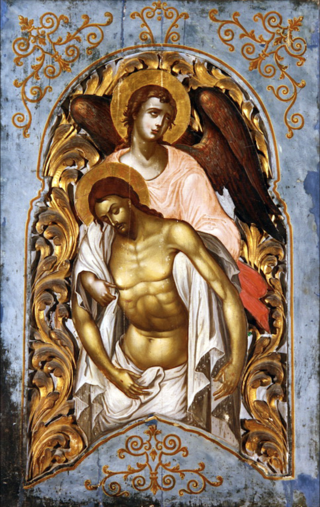
Nikolaos Kallergis, also known as Kalergis. He was a Greek painter during the Greek Rococo and the Modern Greek Enlightenment in art also known as Neo-Hellenikos Diafotismos. His art also exhibited Venetian influence. Painters of the maniera greca began to refine their art. Philotheos Skoufos, Elias Moskos, and Theodore Poulakis were all active painters on the Ionian Islands prior to Kallergis. They set the stage for the transition to the Heptanese School. Panagiotis Doxaras is the forefather of the new painting style. He was the father of Greek Rococo and the Modern Greek Enlightenment in painting. Kallergis became an active member of the school. Kallergis also represents the Greek Rococo. His art began to exhibit qualities of Greek and Italian Neoclassicism. His style influenced countless painters. Examples include Nikolaos Kantounis, Nikolaos Koutouzis, Nikolaos Doxaras, Spiridione Roma, and Eustathios Karousos. His most famous work is Christ and Angel it is at the Zakynthos Museum.

Stylianos Stavrakis, was a Greek painter during the Neo-Hellenic Enlightenment era in art. He was a goldsmith and painter. He was very active on the Ionian Islands. Nikolaos Koutouzis, Nikolaos Doxaras and Nikolaos Kallergis were all active in Zakynthos during the same period. He is a prominent member of the coveted Heptanese painting style. He comes from a family of painters. His brother Andreas Stavrakis and nephew Demetrios Stavrakis were both famous painters. He influenced countless artists. Konstantinos Kontarinis and other artists of the Ionian Islands began to emulate his work. His most notable work is The Deposition from the Cross (Stavrakis). Fourteen of his paintings survived. Most of them can be found in Zakynthos, Greece.

Petros Lambardos, also known as Petro Lambardou or Petrus Lambardo. He was a Greek Renaissance painter from Crete. One of the earliest recorded members of the Lambardos family of painters. He comes from a famous family of painters from the island of Crete. Similar to the Bathas, Moskos, and Tzanes family. The family had many notable painters. Emmanuel Lambardos has the largest catalog of works. Two other notable painters of the same last name were Ioannis and Tzortzi Lambardos. The family were major contributors to the Cretan painting style. Three of Petros's paintings survived. The Virgin Mary painting is in Cyprus, Christ the High Priest is at the Benaki Museum and John the Baptist is in Palermo, Italy.
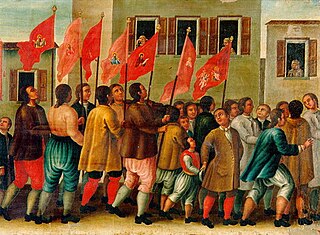
Ioannis Korais was a Greek painter. He was a prominent member of the Heptanese School. His contemporaries were Nikolaos Doxaras and Nikolaos Koutouzis. His family was from the island of Chios. He was the grandson of the painter Michael Korais from Chios. He helped revolutionize Greek painting. He was a follower of Panagiotis Doxaras and the new techniques he was employing.

Ieremias Palladas, also known as PouladasIeremia Pallada. He was a Greek Renaissance painter. He was a clergyman, painter, and educator. He was affiliated with Saint Catherine's Monastery in Mount Sinai, Egypt. He is one of the most notable Greek painters of the 17th century. His family consisted of clergy and painters. His nephew was Patriarch of Alexandria Gerasimos Palladas. His work was influenced by Nikolaos Tzafouris and Angelos Akotantos. Georgios Klontzas and Emmanuel Lambardos were active in Crete around the same period. Palladas influenced the works of Theocharis Silvestros, Iakovos Moskos, Ioannis Kornaros and Philotheos Skoufos. According to the Institute of Neohellenic Research, twenty-four of his works survived. His specialty was painting crosses for the iconostasis or templo. Most of his works are in Egypt.

Stylianos Devaris, also known as Defaris and Kornaros respectively. He was a Greek painter and goldsmith. He was one of the prominent painters from the island of Lefkada. He was a member of the Heptanese School. The island featured many painters namely: Konstantinos Kontarinis, Spyridon Ventouras, Spyridon Maratzos, and Makarios Lefkas. A notable theme popular on the island was John Chrysostom, Criticizing Empress Eudoxia. Stylianos painted his own version of the theme. Spyridon Ventouras and Makarios Lefkas also painted their versions. Devaris mainly painted ecclesiastical themes. According to the Institute of Neohellenic Research, over nineteen of his paintings have survived. His most notable work was John Chrysostom, Criticizing Empress Eudoxia.
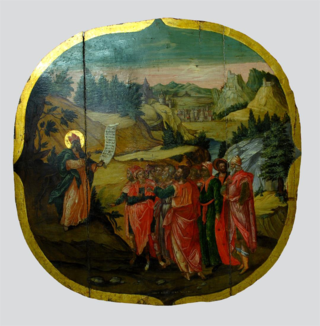
Demetrios Nomikos was a Greek painter, goldsmith, and priest. He shared the same last name with other famous Greek painters. Georgios Nomikos, Demetrios Nomikos and his brother Nicholas Nomikos. He is one of the early representatives of the Heptanese School of painting. He was active during the Greek Baroque and Rococo. He worked with notable Greek painter Antonios Notaras. Konstantinos Kontarinis, Stylianos Stavrakis and Nikolaos Kallergis were active on the same islands around the same period. Nomikos was a master gilder. According to the Institute of Neohellenic Research, five of his works survived. His most notable works are at the Loverdos Museum.

Demetrios Stavrakis, also known as the so-called Romanos was a Greek painter of the Heptanese School. His uncles were famous painters Andreas Stavrakis and Stylianos Stavrakis, active on the island of Zakynthos. Demetrios influenced both Greek and Italian artists. According to the Institute of Neohellenic Research, fifteen of his works survived. His most notable work was The Profit Jonah.

Georgios Kortezas, also known as Tzortzis Kourtezas. He was a Greek baroque painter. He was a member of the Cretan School. He was from a wealthy family. Notable Greek painters active during the same period were Georgilas Maroulis, Ieremias Palladas and Theocharis Silvestros. His style was the Venetian influenced Greek mannerism with some Byzantine influence characteristic of Cretan art. Three of his works survived. The Tragedy of Saint Demetrios. The painting is at the Benaki Museum. The Archangels Gabriel, Micheal, and Raphael. Poli Museum, Corfu. Finally, George Slaying the Dragon is part of the Provatorov Collection in Geneva.

The Crucifixion is a tempera painting by Konstantinos Paleokapas. Paleokapas was a Greek painter from the island of Crete. He was active during the early part of the 1600s. Six of his works survived, four are signed. The Crucifixion is one of the most popular events in human history. The scene has been duplicated countless times. Many crucifixion paintings were created by painters from the island of Crete. Some painters included El Greco, Andreas Pavias, Georgios Markazinis and Ioannis Moskos. Paleokapas created his own version of the popular subject. His crucifixion painting followed the prototype of many other paintings thematically. He added both the dice players and the resurrection of the dead. Andreas Pavias’s The Crucifixion (Pavias) and Margkazinis’s The Crucifixion (Margkazinis) both feature the popular pictorial representation of Mathews gospel. Paleokapas’s Crucifixion is located at the Gonia Monastery in Crete.

The Virgin and Child on Bronze is an egg tempera painting by Greek painter Elias Moskos. Moskos was originally from Crete. The painter migrated to Zakinthos. Two other painters with the name Moskos were active during his lifetime. They were Ioannis Moskos and Leos Moskos. All three painters were affiliated with Venice. Fifty-two of Elias's paintings survived. It is difficult to characterize the work of some painters belonging to the late Cretan School. Some artists also belong to the Heptanese School. The technical migration from the maniera Greca of Cretan-Venetian painting to the more refined Ionian-Venetian style is visible in the works of Elias Moskos and Theodoros Poulakis. His painting of the Virgin and Child drastically migrates from the traditional mannerism prevalent in Cretan painting. The painting clearly belongs to the Heptanese School. His painting of the Virgin and Child is at the Benaki Museum in Athens Greece.

The Prophet Jonah was a tempera painting created by Demetrios Stavrakis. He was a Greek painter representing the Heptanese School. His nickname was Romanos. He was active during the 18th century. He flourished on the island of Zakynthos. He was the nephew of Stylianos Stavrakis and Andreas Stavrakis. Both were famous painters. He thrived during the Greek Rococo and Neoclassical eras in Greek art. Fifteen of his works survived.

Vision of Constantine (Stavarkis) is a tempera painting created by Greek painter and goldsmith Stylianos Stavrakis. Stavrakis was a major representative of the Heptanese school. Many of his works were completed on the Ionian islands namely Zakynthos. He was active during the 1700s. He was from a prominent family of painters His student was his nephew famous Greek painter Demetrios Stavrakis.
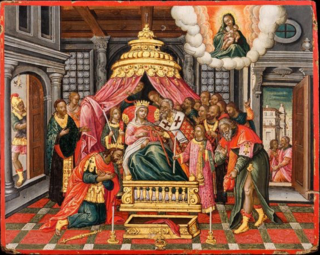
The Miracle of the Holy Belt was completed by Theodore Poulakis. He was a Greek painter originally from the village of Chania, Crete. He was associated with the Cretan School. He eventually migrated to the Ionian Islands. He was a member of the Heptanese School. He settled on the island of Corfu. He was a famous teacher. He signed a six-year contract to teach painting to Marinos Damistras son Tzorzi. The contract stipulated that his student had to follow him to Venice. Poulakis frequently traveled all over the Venetian Empire. During one period of his life, he stayed in Venice for over 13 years. He was very active within the painting community. He was also involved with the prestigious quarantia council. One hundred thirty of his work survived. The Girdle of Thomas also referred to as the miracle of the holy belt is a sacred relic located at Prato Cathedral in Tuscany, Italy.

Constantine and Helen is a painting by Ioannis Moskos. He was a prolific Greek painter associated with Venice and the Ionian Islands. He flourished during the Late Cretan School and early Heptanese School. Three painters with the same last name were active during the same period, the other two were Leos Moskos and Elias Moskos. Ioanni's painting style demonstrates the transition from the Late Cretan School to the early Heptanese School. He began to integrate components prevalent in the Rococo. He was a Baroque artist. According to the Neo-Hellenic Institute, forty-four of his paintings survived.

Lamentation of Christ is an oil painting created by Greek painter Nikolaos Kantounis. He was a painter and teacher. He was a priest. His teachers were famous painters Ioannis Korais and Nikolaos Koutouzis He was a representative of the Heptanese School. His artwork was created during the Neoclassical and Romantic periods in Greek art. He was active on the island of Zakynthos from 1782–1834. He was one of the earliest members of the modern Greek art period. Over 164 of his paintings have survived. He is known for painting many portraits. He was a member of the secret organization for Greek Independence called the Filiki Eteria. Towards the end of his life he was honored with the rank of Grand Sakellarios.
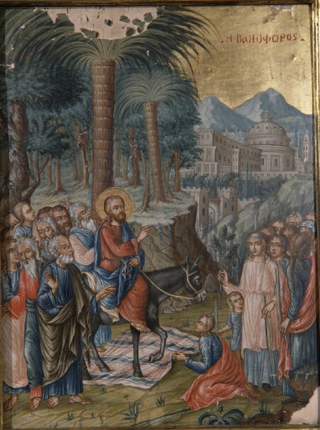
Entry of Christ into Jerusalem or Veoforos is a tempera painting created by Efstathios Karousos. He was a Greek painter. He was a prominent member of the Heptanese School. He was from Kefalonia. He was active in Kefalonia, Naples, Triste and Venice. He is the second Greek painter associated with Naples the other was Belisario Corenzio. Both painters were affiliated with Santi Pietro e Paolo dei Greci. Karouso's artistic period was from 1750 to 1818. Thirty-eight of his works survived. Most of his works are in the church Santi Pietro e Paolo dei Greci.






















